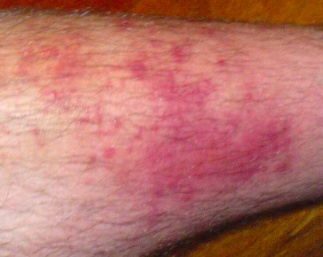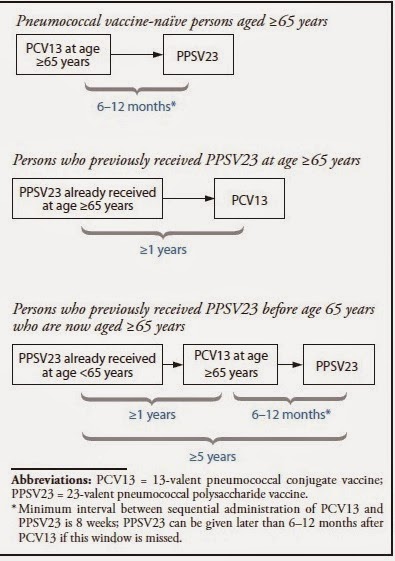
If you
had suggested to me only a short time ago that older people who fall should be
taken off of anticoagulation, I would not have hesitated to agree. After all,
first, do no harm, right? And isn’t the adage “less is more” absolute in
geriatric medicine? But if there is one message I have learned through my
internal medicine and geriatrics training, it is to always question
“absolutes.”
Case
Mr. A
was 91 years old when I first met him and when I took him off warfarin, which
he was taking for atrial fibrillation.
He had many falls, lived alone, and required a walker to walk steadily
but often did not use it in his very cluttered home. One week later, he fell
right in front of our office sustaining a broken nose and I patted myself on
the back. One month later, he awoke with aphasia and was admitted to the
hospital for suspicion of stroke.
Thankfully, his event cleared within 24 hours, but the message it
conveyed cued me to look further into the data we have on anticoagulation and
falls – bringing me to the question, “In older adults with atrial fibrillation
who are at high risk of falling, does bleeding on anticoagulation or stroke
without it portend the greater morbidity/mortality?”
Risk of bleeds with falls
Only one-third
of patients who qualify for anticoagulation for atrial fibrillation receive it,
with falls being listed time and again by primary care physicians as one of the
top reasons for not starting or stopping this treatment. But what is the risk
of major bleeding, especially of intracranial bleeding, in patients at high
risk of falls? After all, the data is clear that anticoagulation worsens the
risk of spontaneous intracranial hemorrhage. Hemorrhage also increases with age
regardless of anticoagulation, so a knock on the head while on blood thinners
could only possibly skyrocket that risk, right? Not necessarily. In 2012, a prospective cohort study
of over 500 patients discharged on oral anticoagulants found no significant
difference in risk of major bleeding – including intracranial hemorrhage – at
one year between those at high risk of falls and those who were not. (1) One limitation was that there were very few
major bleeding events and even fewer fall related bleeds (three!) Also, the
average age in the study was 71 years, so this may not be applicable to our
frail 80 and 90 year olds who are more likely to bleed.
Risk of stroke without
anticoagulation
If
bleeding and stroke rates both increase with aging, how do we balance the two?
And just how large is the stroke risk without anticoagulation? Atrial
Fibrillation Investigators (AFI) found that the average risk of first stroke
for a patient >65 years old with at least one risk factor is 5.7% per year, and by age 75 that risk
rises to 8% per year (2). And in patients with only one risk factor for stroke,
age greater than 75 demonstrated the strongest risk prediction (3). Anticoagulation
with warfarin has been shown to historically lower that risk by at least
two-thirds (2). So, how does this stack up to the risk of major morbidity and
mortality from bleeding? Using pooled data from major atrial fibrillation
trials, a decision analytic modeling study showed that a patient would have to
fall 295 times per year for the risk of warfarin therapy to outweigh the
benefit of stroke prevention (4). But is this just fancy math? Maybe not. A database
study of over 20,000 Medicare beneficiaries found that despite higher
incidence of intracerebral hemorrhage in patients identified as high risk for
falls, if they also had at least a moderate stroke risk (CHADS=2),
anticoagulation with warfarin was protective of mortality (5). While an obvious
limitation is the data extraction using billing codes, a strength of this study
over other studies described was the average sample age of 80 years.
Novel Oral Anticoagulants (NOACs)
– throwing a wrench in the works?
But just
as I’m finally getting comfortable with the data on warfarin, we have new
agents with new risk profiles. Plus, they come with the caveat that if your
patient suffers an intracranial hemorrhage when on a NOAC, there is no antidote
to reverse it. Yet thankfully, the data we have points that the intracranial
hemorrhages sustained on NOACs are fewer and less severe – possibly due to the
shorter half-life of the drugs and quicker wash-out even despite not having an
antidote (6). So, in spite of the highly discussed fear of lack of antidote,
anticoagulation in our older patients with atrial fibrillation at risk of falls
still seems in favor.
Conclusions and Caveats
The data is mounting that
providing anticoagulation for patients with atrial fibrillation regardless of
age and risk of falling is safer than withholding it, although most of the data
excludes our oldest old and frailest frail. In the future, greater use of anticoagulation in
this population will help us study the risks and benefits, and guide treatment
decisions. Perhaps, the most astonishing point I learned from this
exercise was the value of rechecking your gut reaction with available
literature as a guide, keeping in mind that the application of the data lies
somewhere in the marriage of the art and science of medicine. That is the
essence of evidence-based medicine.
References:
1. Donzé J, Clair C, Hug B, et al.
Risk of falls and major bleeds in patients on oral anticoagulation therapy. Am
J Med. 2012 Aug; 125(8):773-8.
2. Risk factors for stroke and efficacy of antithrombotic therapy in
atrial fibrillation. Analysis of pooled data from five randomized
controlled trials. Arch Intern Med. 1994 Jul 11; 154(13):1449-57.
3. Olesen JB, Lip GY, Hansen ML, et al. Validation of
risk stratification schemes for predicting stroke and thromboembolism in
patients with atrial fibrillation: nationwide cohort study. BMJ. 2011 Jan 31; 342:d124.
4. Man-Son-Hing M, Nichol G, Lau A, Laupacis A. Choosing
antithrombotic therapy for elderly patients with atrial fibrillation who are at
risk for falls. Arch Intern Med. 1999 Apr 12; 159(7):677-85.
5. Gage BF, Birman-Deych E, Kerzner R, et al. Incidence of intracranial hemorrhage in patients with atrial fibrillation
who are prone to fall. Am J Med. 2005 Jun; 118(6):612-7.
6. Caldeira D, Barra M, Pinto FJ, et al. Intracranial
hemorrhage risk with the new oral anticoagulants: a systematic review and meta-analysis.
J Neurol. 2015 Mar; 262(3):516-22.
Photo courtesy Martin Cathrae
by: Mallory Otto, MD, Geriatrics fellow, Icahn School of Medicine at Mount Sinai.
This post is part of the #GeriCases
series, in which we discuss a clinical case in geriatrics and palliative medicine and the
attempt to provide patient-centered care with the use of best available
evidence.
Ravishankar Ramaswamy, MD
@RavRamaswamy
Section Editor, #GeriCases



